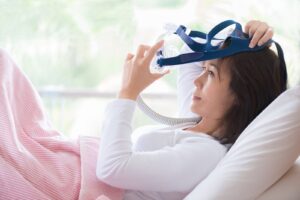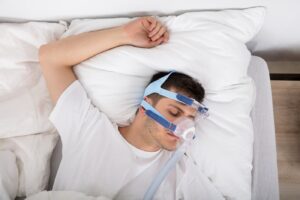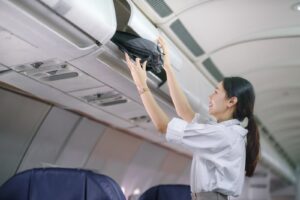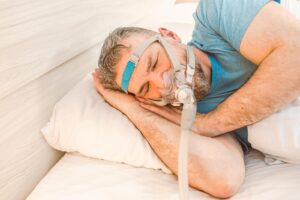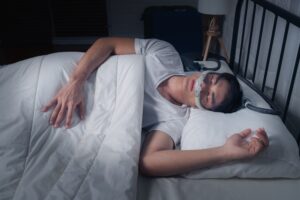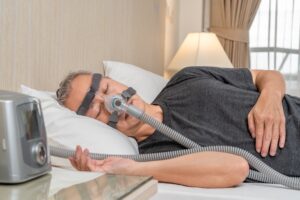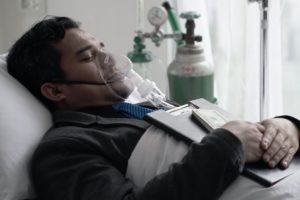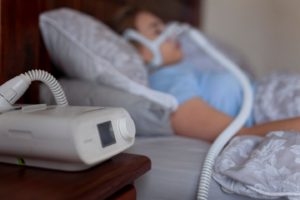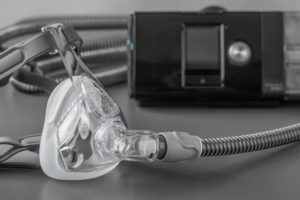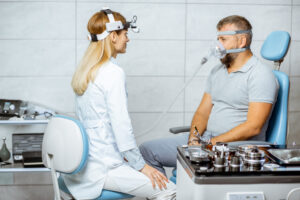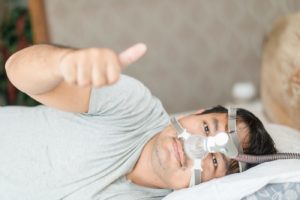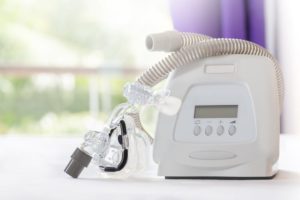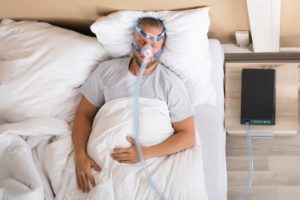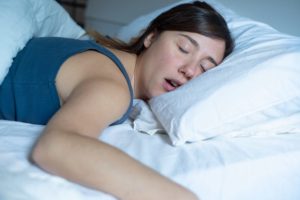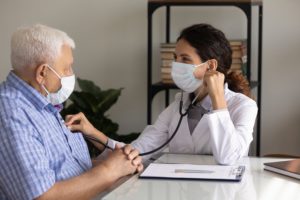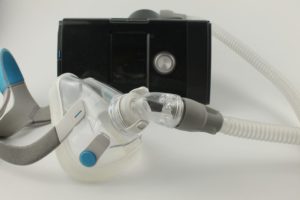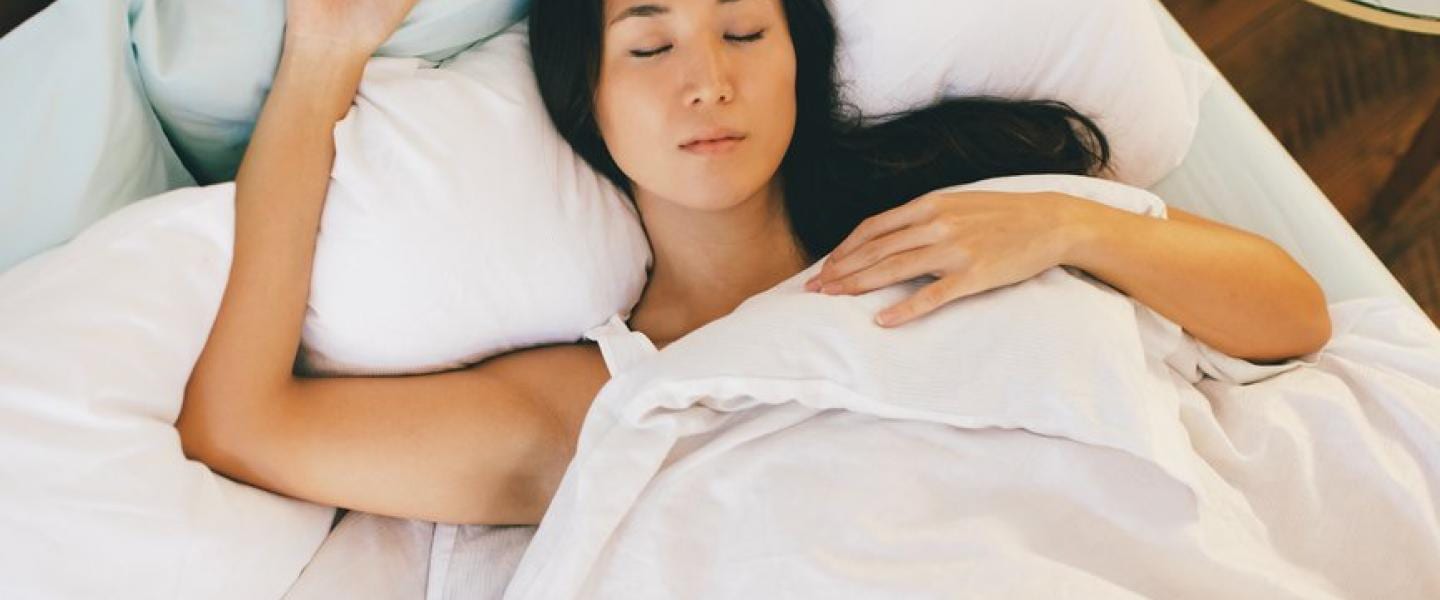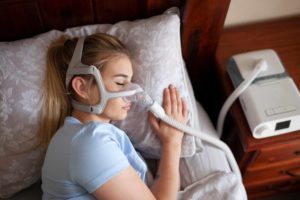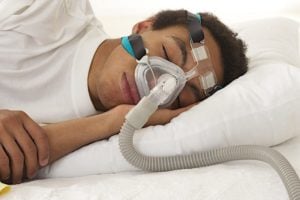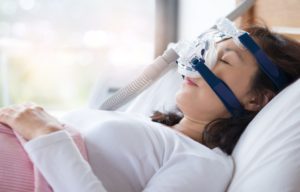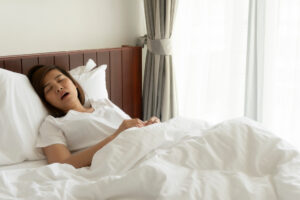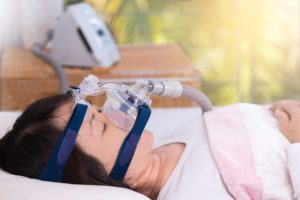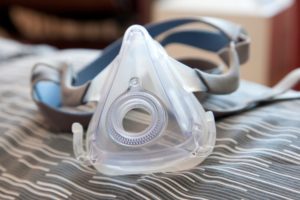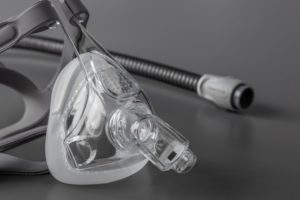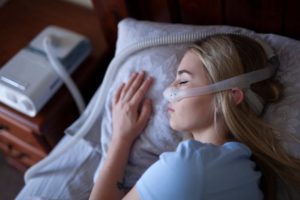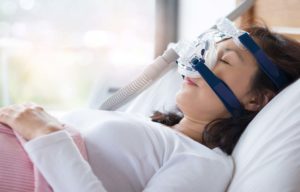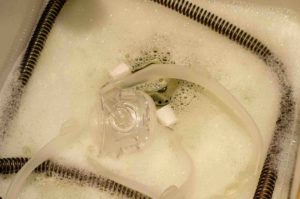How to Camp With a CPAP Machine
Taking CPAP Off the Grid, Safely
A continuous positive airway pressure (CPAP) machine is an important daily-use device for many people who have sleep apnea. Using one can help minimize symptoms, so it’s important to continue therapy even if you’re planning a getaway. While camping with a CPAP machine may seem like more trouble than it’s worth, there are ways to get proper therapy while you’re enjoying the great outdoors.
We’ll explain some of the best ways to camp with your CPAP machine and highlight the products that make it easier. Your access to space and power sources will differ depending on whether you’re camping in an RV, a tent, or the backcountry, so we’ll address what devices to use and what power sources to consider in each scenario. We’ll also go over some of the most commonly asked questions that CPAP owners have about using their devices on camping trips.
What to Consider When Camping With a CPAP Machine
Using a CPAP machine while camping requires advance planning, but there are many ways to make sure that your therapy quality doesn’t drop while you’re away from home. We’ll cover some of the most important factors to consider and highlight travel products that can help.
Trip type and length
The type and length of camping trip you have planned are two important factors to keep in mind. For example, you may not need a power supply at all if your trip only lasts a night or two. A travel CPAP machine with a strong, fully charged battery may be sufficient to meet your needs.
If you’re RV or car camping at a campground that supplies power, you may be able to use your home or travel CPAP machine by keeping it plugged in or charging it as needed. Keep in mind that an extension cord may be necessary if you are tent camping, if there is not an outlet near your RV bed, or if you are worried about overloading your RV’s power system. Make sure to check the CPAP manufacturers guidelines to find out if and how you can use an extension cord with your device.
If you’re headed off the grid for more than two days, you should look into a portable power source for your CPAP machine. You can use external rechargeable batteries and swap them out as needed so that you always have a functioning machine. You can also use auxiliary power sources, such as inverters or solar chargers. Make sure to consider the size and weight of extra batteries or portable chargers if you plan on carrying them in your pack.
Outdoor conditions
Manufacturers typically list recommended operating temperatures in product manuals. Look ahead to see what kind of weather you’ll encounter, and plan accordingly.
Cold temperatures and high altitudes can drain your CPAP machine’s battery quickly, so bring an extra battery or portable charger if you’re cold-weather camping. Extreme heat can also cause battery corrosion, so take care to keep your machine well-shaded if you’re camping in weather hotter than 95 degrees.
Inverters
Inverters change direct current (DC) power—the kind provided by batteries—to alternating current (AC) power—the kind provided by electrical outlets. Plugging an inverter into your car’s 12-volt port or cigarette lighter allows you to charge your CPAP machine using your vehicle’s battery.
Inverters are relatively inexpensive and easy to find, so purchasing one to take on a car or RV camping trip is a good option if you need a simple way to charge your travel CPAP or portable batteries. Keep in mind that anything plugged into an inverter can drain your car’s battery, so you may need to use the inverter while the engine is running and unplug it while it’s not in use.
CPAP batteries
Camping with an extra CPAP battery is also a good way to ensure you have a functioning machine during travel. Portable batteries are rechargeable, and they’re often lightweight and small enough to carry in a pack. You can recharge these batteries while camping via solar power, USB, or an inverter, depending on the model. Some batteries are designed specifically for use with a CPAP machine, while others are able to power many kinds of accessories.
Before buying a battery, check to see if it’s compatible with your CPAP machine, as not all portable batteries and CPAP machines work together. You should also buy a battery that lasts at least as long as you sleep. How fast the battery charges—which can change depending on the strength of your power source—is also important to factor into your decision.
CPAP humidifiers
Using a CPAP humidifier is one of the most effective ways to increase comfort during therapy. Many CPAP machines have integrated humidifiers, while some smaller travel CPAP machines rely on external humidifiers. Regardless of which style you choose, adding a humidifier can help decrease instances of dry mouth and irritation, especially if you’re camping in a dry environment.
CPAP humidifiers require distilled water. Plan on bringing enough with you to last the duration of your trip, or purchase a portable water distiller to make your own. You can also try a waterless humidifier that uses the moisture in your breath instead of water.
Weight and CPAP accessories
If you’re backpacking, every extra ounce that you carry counts. Paying a bit more for slim, long-lasting batteries and lightweight solar panels may be worth it if you have to carry your CPAP and its accessories on your back.
Humidifiers, heated hoses, and machines with other added technology may draw more power than basic machines, which you’ll need to consider when purchasing batteries and power sources. Backpackers may also want to look into waterless humidifiers because they eliminate the need to bring a water distiller or heavy bottles of distilled water.
Is Camping With a Travel CPAP Machine Useful?
Travel CPAP machines are typically lighter than home-use CPAP machines, and they often don’t need to be plugged in during use. You can charge many models so that they last through the night. Some are designed to run on DC power, so you can plug them into your vehicle without using an inverter.
These devices are streamlined and sometimes don’t include all the features that home machines do, like integrated humidifiers. They’re often more expensive than home-use CPAP machines and aren’t always covered by insurance, as some companies deem them non-essential.
If you camp away from power sources or backpack regularly, investing in a travel CPAP machine is likely worth it, especially if you carry your equipment and want a lightweight and compact device. However, those who camp in an RV or at campsites that provide power can usually use their regular CPAP machine.
Tips for Camping With a CPAP Machine
There are a handful of ways to make camping with a CPAP machine easier. We’ll discuss common issues people run into and how to troubleshoot each one.
Solar Chargers and Portable Generators
If you plan on camping for longer than your CPAP machine’s battery life typically lasts, bringing a portable power source is a convenient way to recharge your machine or auxiliary batteries.
Generators and solar chargers are two of the easiest ways to get power while off the grid, but they have different applications. Generators work well if you’re traveling in an RV or need to produce a large amount of power. Because they’re relatively large and noisy, and they require gasoline, it only makes sense to bring a generator with you if you’re camping out of an RV or a car with plenty of space. Be aware that some campgrounds do not allow generator use or only allow it at particular campsites.
Backpackers and those seeking a lightweight power source should opt for portable solar chargers, which come in a variety of shapes and sizes. Many are foldable and easy to use and transport. When selecting a solar charger, make sure to choose a model that will produce enough power to recharge your CPAP machine’s battery. Solar panels take anywhere from 6 to 12 hours to charge a CPAP machine’s battery. If you are backpacking, you may need a model that can attach to your pack and charge your device while you are on the move.
Reserve a Campsite With a Power Source
Booking a campsite with power can help keep your CPAP machine working during your entire camping trip. You can typically find electricity information by checking campground websites. Private campgrounds, state sites, and national parks with power usually provide details outlining amp levels and outlet locations.
CPAP Cleaning Wipes and Use of Mild Camp Soaps
Cleaning your CPAP machine and accessories regularly is critical to help prevent bacteria growth. Though CPAP wipes aren’t a replacement for regular cleaning methods, they can be handy when camping. Use a CPAP wipe to clear away any dirt or environmental debris that gathers on your full-face mask, nasal mask, hose, or machine. Then, use mild biodegradable soap and water to soak and clean your mask, humidifier, and accessories.
When camping in the backcountry, it’s important to leave the land better than you found it by using leave no trace practices. That means packing out all your trash, including CPAP wipes. You also must follow proper greywater protocols, which can vary depending on your location. Check the camping area’s rules and regulations before you visit, and plan accordingly.
Common Questions When Camping With a CPAP Machine
Using a CPAP machine takes some adjustment at first, and traveling with one does as well. We’ll tackle some of the most common questions CPAP users have when planning to use their device during a camping trip.
Most CPAP machine manufacturers recommend using only distilled water in your CPAP humidifier. Distilled water doesn’t have any bacteria or minerals, so it’s less likely than other types of water to cause reservoir build up or airway irritation.
While camping, it may be tempting to use filtered water from a lake or stream in your CPAP humidifier, but it’s best to stick to distilled. Even though using a filter can make water safe for drinking, it doesn’t remove mineral content. Naturally occurring minerals like calcium and zinc can leave residue inside your CPAP humidifier and cause it to wear out faster.
If you don’t have room to bring distilled water, you can purchase a portable water distiller or waterless humidifier. While some devices are large and meant for countertop use in your home, there are a number of portable distillers that can fit easily into a car or even a backpack.
If the RV is connected to a power source, you can power your CPAP machine using an inverter or plug it directly into an outlet. However, if your RV is off the grid and running on battery or solar power, an inverter is a great way to charge a portable battery or your travel CPAP machine. The inverter draws power from the RV battery and converts it into a current that works with regular household electrical items, including CPAP machines.
If you typically connect to power while camping or use a generator, you can plug the CPAP machine into an outlet and use it normally without relying on the CPAP machine’s battery power. You can also run an extension cord to the campsite’s power source, but make sure to follow the manufacturer’s guidelines for extension cord use.
You can use an inverter to run a CPAP machine off an RV or car battery. However, a better option may be to use the inverter to charge a travel CPAP machine or external portable battery instead of keeping the machine plugged in while you use it. Running your CPAP machine with the inverter all night may drain the battery and cause it to die. You can avoid this by using a CPAP machine with an internal or external battery that charges quickly.
You can charge a CPAP battery in the car by using an inverter that plugs into your cigarette lighter or 12-volt port. Inverters are affordable, readily available, and an excellent way to charge any kind of low-power electrical device while traveling, including travel CPAP machines and portable batteries.

